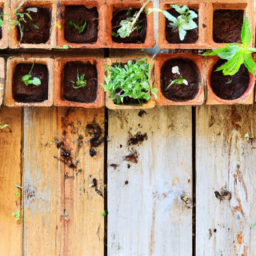How To Start Container Gardening
How To Start Container Gardening
How To Start Container Gardening
Container gardening is an increasingly popular way to grow plants in urban areas. It is also an excellent option for those with limited space, enabling you to cultivate a delightful garden on your balcony or patio.
The Basics of Container Gardening
Container gardening can be divided into three main categories. Firstly, you can create a conventional container garden using off the shelf materials such as resin, terracotta, or ceramic containers. Secondly, you can choose to upcycle materials into planters and containers, such as wooden crates, barrels, or even old tyres. Finally, you can grow vegetables in self-watering planters or Smartpods.
No matter which type of container gardening you choose, it is important to remember that the size of the container will determine the type of plant you can successfully grow. For example, deep-rooted vegetables such as carrots need plenty of growing space, so it is best to use large containers to ensure proper root development. Similarly, shallow-rooted vegetables such as radishes will thrive in smaller containers.
Choosing the Right Soil for Your Container Garden
When container gardening, it is essential to use soil that is able to provide the ideal growing conditions. The one crucial element to consider is that the soil needs to be able to retain moisture. Generally, the best soils for container gardening contain peat moss, compost, and vermiculite. This combination will provide enough fertile soil with the right amount of drainage and aeration for successful vegetable growth.
It is important to note that the soil you use needs to be free of weeds. To ensure this, you should sift the soil with a strainer before use, to filter out any plant material, and then sterilize the soil in a hot oven or microwave.
Selecting Nutrient-rich Fertilizers for the Garden
In order to ensure successful vegetable growth in your container garden, it is important to provide the plants with the necessary nutrients. The best and most cost-effective option is to choose a fertilizer with a high concentration of nitrogen and phosphorous. This type of fertilizer will provide your plants with the necessary nutrients to grow strong and healthy.
When selecting a fertilizer for your container garden, it is important to be aware of the specific needs of the types of vegetables you will be planting. For example, if you are growing spinach, you should opt for a fertilizer with more nitrogen, as spinach requires more of this nutrient than other vegetables.
Ensuring Proper Watering for Container Gardening
The success of container gardening heavily relies on proper watering. It is essential to water the vegetables at least once a day. To ensure the right depth and amount of watering, you should take into consideration the size of the container and the type of soil you are using. It is also important to note that over-watering can be just as damaging as insufficient watering.
Preventing Common Plant Pests
Although container gardening creates a great environment for growing vegetables, it is important to take certain steps in order to prevent plant pests. It is advisable to regularly check the plants for signs of infestation and if pests are found, it is important to take immediate action. The most common plant pests are aphids, thrips, and slugs, so it is important to take preventive action against these.
Final Word
Container gardening is an excellent way to grow vegetables in urban settings, and with the right preparation, it can be a successful and rewarding experience. Before beginning to grow vegetables in containers, it is important to consider the size of the container, the type of soil, the right type of fertilizer, and the appropriate watering schedule. It is also essential to be vigilant for common plant pests in order to provide the healthiest environment for a successful container garden.

Previous Page
Next Page
